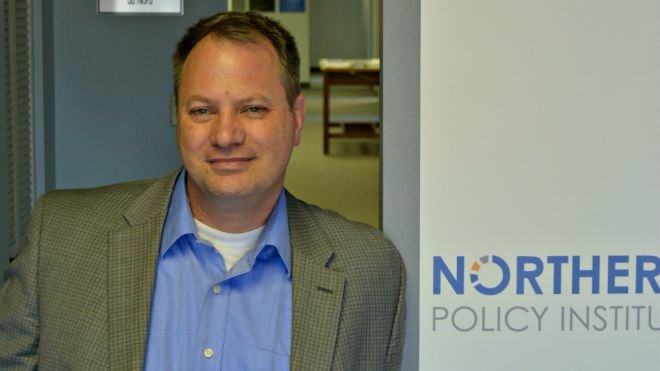Twice last month, we were challenged to think BIGGER in terms of our vision for the future of our region and our country.
First came Dr. David Robinson’s piece in this magazine decrying the incrementalist nature of the recently released provincial multi-modal transportation study.
Then came Conrad Black, in the pages of the National Post, reminiscing about the days of real policy debate in this country and putting forward some big ideas of his own for transformational change.
So, here are five big ideas for Ontario’s North.
One, connect Highway 11 through Aroland to Armstrong and over top of Lake Nipigon to Savant Lake. If we are serious about a dedicated truck route, electronic vehicles, and creating a true transportation grid, that will do it. If the bridge at Nipigon is ever blocked again, the country will not be cut in half. Such a route also “opens up” the mid-north and would tie nicely into the proposed infrastructure for the Matawa communities and the Ring of Fire.
Two, let’s explore a high-speed train from Toronto to Edmonton with stops in Timmins, Aroland, Red Lake and Winnipeg for starters. Trains are making a recovery in much of the world due to better emissions control, fuel efficiency and, frankly, comfort. High-speed trains cover long distances while servicing major centres. We have large population centres separated by large distances, and the ability to slot in one or two stops along the way to increase the options for the rest of us.
Three, commit to 100 per cent cellular coverage and 100 per cent high-speed penetration within a five-year window. Not as a target to be achieved eventually, not on the “Queen’s highways,” but in every northern region. We want to be a tourist destination, fine. Modern tourists use their electronic devices. There are still some who want to cut off from the world, to be sure, but if you want to return to the days of carloads of American families spending money at the local mom and pop, the kids in the back seat better be able to Snapchat. As for internet, information is the new oil – no pipeline, no oil; no oil, no industry. Simple.
Four, all administrative data collected by government and quasi-government agencies should be made available through a single public policy research hub. I am not talking about an open data portal where public servants decide what will be released and then clean the data pre-release. I am talking about a full data dump into the hands of data and statistical experts with the mandate to release as much information as possible while ensuring data protocols are in place to protect individual privacy. If we want evidence-based decision-making, then we need to give people better access to the evidence.
Five, Northern Ontario should be a test bed for tax reform. Tax economists have long argued that, in theory, low-income taxes and high consumption taxes are more conducive to economic growth and individual prosperity. The Organization for Economic Co-operation & Development (the OECD) collected real-world data and came to the same conclusion. Ontario and the federal government could test real reforms here first. Judge their efficacy and unintended impacts before moving to broader implementation. We are doing that with a Basic Income, so let’s expand the concept.
The best part of all of these big ideas is that none of them are new or unproven. The TransCanada rail and road network, the interstate in the U.S., the Autobahn in Germany all demonstrated the efficacy of these types of projects to spur growth and sustain prosperity.
Maquiladoras in Mexico and special economic zones elsewhere have worked wonders to spur investment and promote growth. Nova Scotia invested in both a 100 per cent high-speed internet target and a Population Health Research Unit for the combining and sharing of administrative data in the health area. Manitoba has combined its health, education and social service data sets to rave reviews.
All of this can be done. Some ideas are cheaper than others. Some involve reallocating existing spending or adjusting administrative rules. The biggest barrier isn’t cost, though; it’s attitude.
Do we have the willpower to make big things happen?
We shall see.



